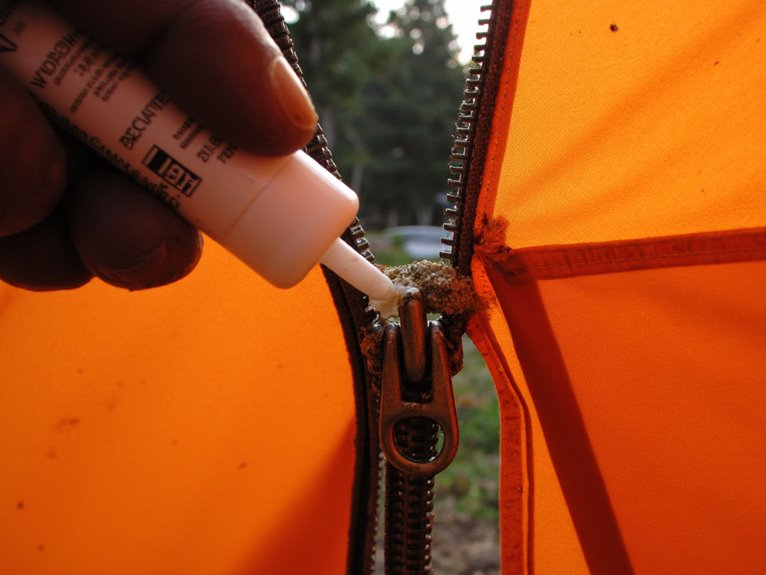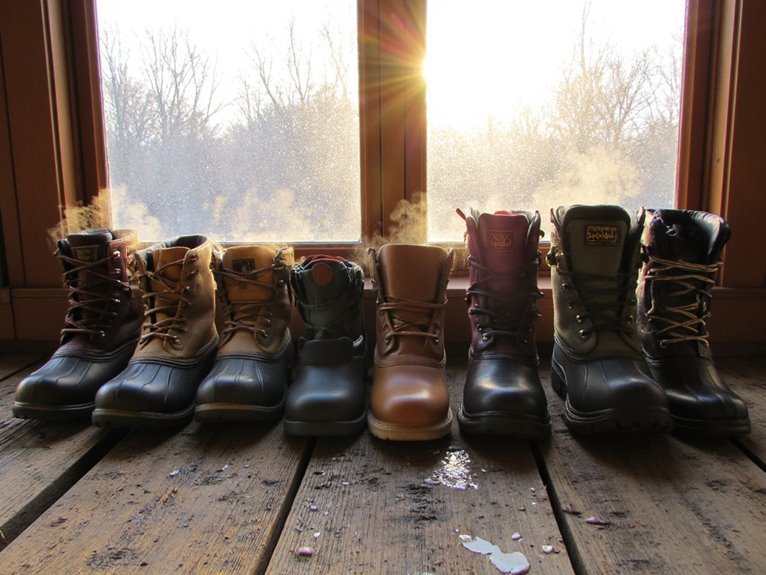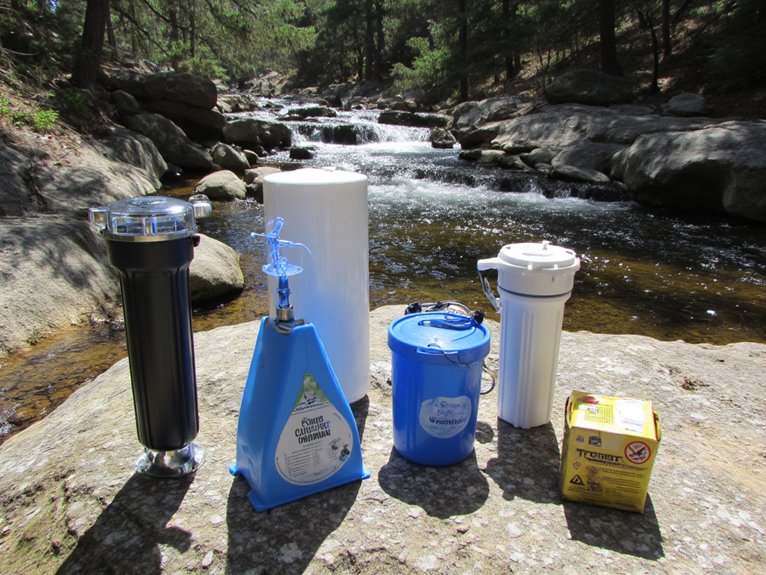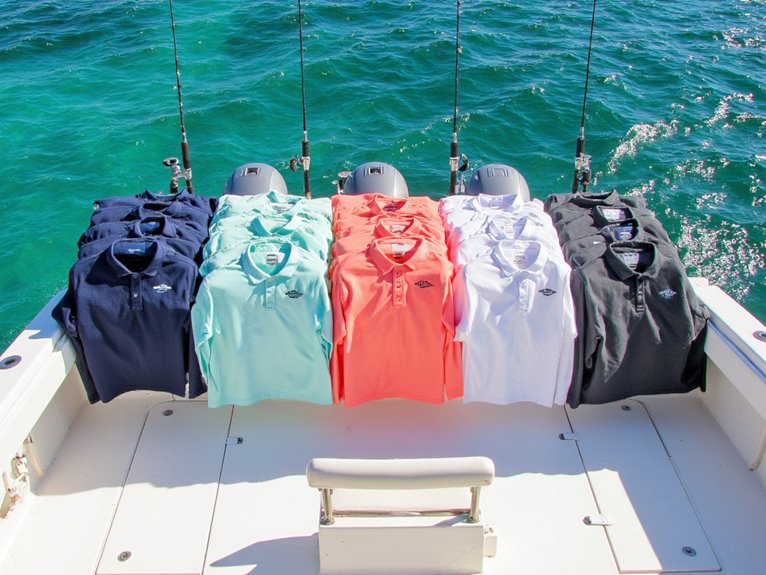Tent Zipper Maintenance: Preventing Trail-Ending Failures
Prevent tent zipper failures by maintaining a compact repair kit with #3, #5, #8, and #10 coil sliders weighing under four ounces. Clean zippers monthly using an old toothbrush and lukewarm soapy water, then apply wax-based lubricants for light maintenance or dry Teflon for heavy-duty use. Never force stuck zippers—backtrack gently to prevent misalignment. Store tents at 18°C-21°C with 60-65% humidity after ensuring complete dryness. These essential practices reveal advanced techniques that’ll keep your shelter functioning flawlessly.
We are supported by our audience. When you purchase through links on our site, we may earn an affiliate commission, at no extra cost for you. Learn more. Last update on 8th November 2025 / Images from Amazon Product Advertising API.
Notable Insights
- Keep a lightweight repair kit with spare sliders, pliers, and lubricants under four ounces for emergency field fixes.
- Clean zippers regularly with dry brushing and mild detergent, then lubricate monthly to prevent debris-related failures.
- Never force stuck zippers; gently backtrack and reverse direction to avoid misalignment and permanent damage.
- Store gear in cool, dry conditions and inspect zipper alignment and tooth condition before each camping season.
- Perform pre-trip and post-trip zipper inspections to catch early wear signs and prevent unexpected trail failures.
Essential Tools for Zipper Care and Emergency Repairs
The right tools can mean the difference between a successful camping trip and a gear failure that cuts your adventure short.
Proper preparation and quality repair tools separate memorable outdoor adventures from disappointing trips home due to preventable equipment failures.
You’ll need a thorough zipper repair kit containing sliders in common sizes (#3, #5, #8, #10 coil) that match most tent zipper materials. Standard pliers and wire cutters enable slider removal and installation. Include needles, black thread, and a seam ripper for fabric repairs around zipper tape edges.
Pack additional essentials: scissors for trimming frayed material, spare pull tabs, and zipper wax for lubrication. These repair techniques address 90% of field failures. Your kit should weigh under four ounces while providing multiple replacement options. A comprehensive kit should include top and bottom stops to secure zipper ends after slider replacement. Store everything in a compact container that fits easily in your pack without taking up valuable space.
Remember that slider replacement works only when zipper teeth remain intact—damaged tracks require complete zipper replacement.
Cleaning Techniques to Remove Damaging Debris
When debris accumulates in your tent’s zipper system, it acts like grinding compound between moving parts, accelerating wear and potentially causing complete mechanical failure. Proper debris identification starts with recognizing common culprits: fine ash, sand, salt crystals, and organic matter that embed between teeth.
Begin cleaning with dry brushing using an old toothbrush to dislodge loose particles. Work the zipper fully open during this process.
For stubborn contamination, wash with lukewarm water and mild detergent under moderate pressure to flush crevices thoroughly. Salt corrosion requires scrubbing with white vinegar and boiling water mixture. After washing, allow the zipper to air dry completely before applying any lubricant or packing the tent.
Cleaning frequency depends on environmental exposure. Sandy, windy, or coastal conditions demand immediate post-trip attention. Even without visible debris, rinse zippers thoroughly with fresh water to prevent long-term damage.
Regular cleaning prevents embedding and reduces slider wear considerably. Like quick-drying fabrics used in high-performance sleeping bags, properly maintained zippers enhance your gear’s overall moisture resistance and reliability in challenging outdoor conditions.
Lubrication Methods for Smooth Performance
After removing debris from your tent’s zipper system, proper lubrication becomes your next line of defense against mechanical failure. Different lubricant types serve specific purposes and conditions. Purpose-designed products like Zipper Ease use clear wax formulations that won’t stain fabric. Silicone-based options work effectively but require careful application to prevent fabric damage.
| Lubricant Type | Best Application | Durability | Fabric Safety | Dirt Resistance |
|---|---|---|---|---|
| Wax-based | Light maintenance | High | Excellent | Good |
| Silicone | Stuck zippers | Medium | Moderate | Fair |
| Dry Teflon | Heavy-duty use | Very High | Good | Excellent |
| Oil-based | Emergency repair | Low | Poor | Poor |
| Commercial gel | Precision work | High | Very Good | Good |
Effective application techniques include using built-in brushes for precise coverage and working lubricant between teeth through repeated zipper cycles. For daily-use camping gear, monthly lubrication helps maintain consistent zipper performance and prevents unexpected failures in the field. Wiping off excess lubricant prevents dirt accumulation and clumping that can compromise zipper function.
Proper Usage Habits to Minimize Wear
Beyond lubrication, your daily handling habits determine zipper longevity more than any maintenance routine. Proper zipper usage starts with maintaining clear tracks free of debris and obstructions.
Never force a stuck zipper; instead, gently back it up until it disengages completely. This damage prevention technique prevents track misalignment and slider deformation.
When zippers split, immediately reverse direction until teeth re-engage properly. Forcing continues the split and may cause permanent damage.
Minimize opening and closing frequency during camp activities. Each cycle adds cumulative wear to the slider mechanism.
Keep tent setup geometrically sound to prevent zipper stress. Uneven tension from improper staking creates lateral forces that exceed design tolerances.
Store boots outside the tent interior to prevent grit infiltration into zipper tracks. During setup, practice your tent pitch beforehand to ensure smooth operation and reduce zipper manipulation time. Clean zippers regularly with soapy solutions rather than silicone sprays to effectively remove accumulated dirt and oils.
Field Repair Strategies for Common Problems
Despite your best prevention efforts, zipper failures will occur in field conditions where professional repair isn’t available. Effective zipper troubleshooting requires immediate assessment and targeted solutions using available materials.
| Problem | Field Solution |
|---|---|
| Stuck slider | Apply graphite powder or candle wax sparingly |
| Missing pull tab | Use zip-ties, paperclips, or small keyrings |
| Bent teeth | Gently straighten with pliers using light pressure |
| Detached slider | Press back onto teeth with controlled pressure |
| Debris blockage | Remove with tweezers, brush away particles |
Emergency replacements work temporarily but require proper technique. When realigning bent teeth, test movement frequently to prevent over-correction. For slider reattachment, thread zipper tape from the bottom while maintaining proper tooth alignment. Dry and dusty conditions common in areas like the PCT significantly increase zipper malfunction rates. These quick fixes extend functionality until professional repair becomes possible. Implementing consistent routine maintenance practices reduces the frequency of these field emergencies and helps preserve your equipment investment.
Storage Practices to Preserve Zipper Integrity
You’ll extend your tent zipper’s lifespan considerably by storing it in the proper position and conducting thorough pre-season inspections.
Close all zippers halfway during storage to maintain tension balance across the teeth while preventing stress concentration at either end of the zipper track.
Check zipper alignment, slider tension, and tooth condition before each camping season to identify potential failures that could strand you in the field.
Budget-friendly options like the Night Cat and MC TOMOUNT tents feature taped seams that provide reliable weather protection when zippers are properly maintained.
Proper Zipper Positioning
When you’re ready to pack your tent away, the position and condition of your zippers directly determine their lifespan and performance on future trips. Proper zipper positioning prevents mechanical stress that causes premature failure.
Essential Positioning Practices:
- Close all zippers completely – This maintains proper zipper alignment and distributes tension evenly across the teeth structure.
- Avoid folding on zipper lines – Direct folds create pressure points that bend teeth and compromise zipper strain resistance.
- Position zippers away from heavy items – Place zipper-heavy sections on top within storage bags to prevent crushing forces.
- Keep sliders at closed positions – This prevents slider deformation and maintains consistent tension distribution throughout the zipper mechanism.
These positioning techniques preserve zipper integrity during storage periods.
Pre-Season Storage Checks
Beyond proper positioning during packing, your zipper’s longevity depends heavily on pre-storage preparation and ongoing maintenance throughout the off-season.
Your pre-season checklists must include thorough zipper inspections before storing gear. Check teeth and sliders for dirt, sand, or debris that blocks smooth operation. Clean zippers with lukewarm, mild soapy water using a soft cloth. Rinse thoroughly and air dry completely before storage.
Store tents in cool, dry places maintaining 18°C to 21°C temperatures with 60-65% relative humidity. This prevents mildew and corrosion. Confirm complete dryness before packing to avoid fungal growth that degrades zipper materials.
Apply Teflon-based spray or dry soap to sticky zippers after cleaning. Conduct periodic mid-storage inspections to detect early corrosion or wear signs.
Regular Maintenance Schedules and Inspection Routines
Although tent zippers operate reliably for thousands of cycles when properly maintained, they’ll fail catastrophically without regular inspection and care.
Your maintenance frequency should align with usage intensity and environmental exposure. Establish a detailed inspection checklist that addresses both mechanical and fabric components systematically.
Essential Inspection Schedule:
- Pre/Post-Trip Inspections – Check for visible wear, damage, or stiffness before and after each camping expedition to identify developing problems early.
- Monthly Deep Inspections – Conduct thorough examinations during heavy-use seasons, focusing on hardware function and seam integrity around zipper assemblies.
- Quarterly Lubrication Cycles – Apply silicone-based lubricants every three months, regardless of usage frequency, to maintain smooth operation.
- Documentation Protocol – Record observed damage, stiffness, or performance issues to track zipper condition trends and schedule preventive maintenance actions.
Frequently Asked Questions
Can I Replace Individual Zipper Teeth on My Tent Zipper?
You can’t effectively replace individual zipper teeth on modern tent zippers.
Tent zipper materials like plastic, coil, and molded teeth are machine-manufactured and permanently bonded during assembly.
Standard zipper repair techniques focus on cleaning and realigning existing teeth, not replacement.
Missing teeth require full zipper replacement since no reliable individual tooth replacement kits exist for field repairs.
How Do I Choose the Right Zipper Size When Replacing Tent Zippers?
You’ll need to identify your existing zipper size by checking the number embossed on the slider’s back or measuring the closed teeth width in millimeters.
Choose zipper material based on your tent’s requirements—nylon coil for flexibility, plastic molded for weather resistance.
Confirm zipper compatibility by matching teeth type, slider style, and length.
Heavy-duty tents typically require size #10 or larger for durability.
What’s the Lifespan of a Typical Tent Zipper With Proper Maintenance?
Your tent zipper’s longevity depends heavily on quality and care. High-grade YKK zippers with proper zipper maintenance tips can last 10-15 years, while budget models may fail within 2-3 years.
Regular cleaning removes debris, lubrication prevents corrosion, and gentle operation avoids tooth damage. Tent zipper longevity increases dramatically when you’re diligent about maintenance—clean tracks monthly, apply silicone lubricant seasonally, and inspect for wear signs regularly.
Are YKK Zippers Really Better Than Other Brands for Outdoor Gear?
Zipper comparisons consistently place YKK ahead in outdoor applications.
You’ll find YKK durability comes from square-tooth technology, self-locking mechanisms, and superior materials that resist environmental stress.
While competitors like SBS offer cost savings, they can’t match YKK’s field reliability.
You’re paying premium prices, but you’re getting proven performance where zipper failure means gear failure.
Major outdoor brands choose YKK for critical applications.
Can I Waterproof My Zipper Without Affecting Its Smooth Operation?
You can waterproof your zipper while maintaining smooth operation using proper zipper lubrication techniques and careful waterproofing methods.
Clean the zipper thoroughly, then apply water-repellent treatment sparingly to avoid attracting debris.
Use zipper-specific lubricants in minimal amounts after waterproofing. Operate the zipper multiple times to distribute products evenly, then wipe excess material.
This prevents buildup that causes friction and snagging.
On a final note
You’ve learned essential zipper maintenance techniques that’ll prevent costly gear failures. Clean debris regularly using a soft brush and mild soap solution. Apply silicone-based lubricants monthly to maintain smooth operation. Practice proper opening and closing techniques to reduce stress on slider mechanisms. Carry repair supplies including replacement sliders and zipper wax for field emergencies. Store tents with zippers partially open to prevent compression damage. Following these protocols extends zipper lifespan considerably.





